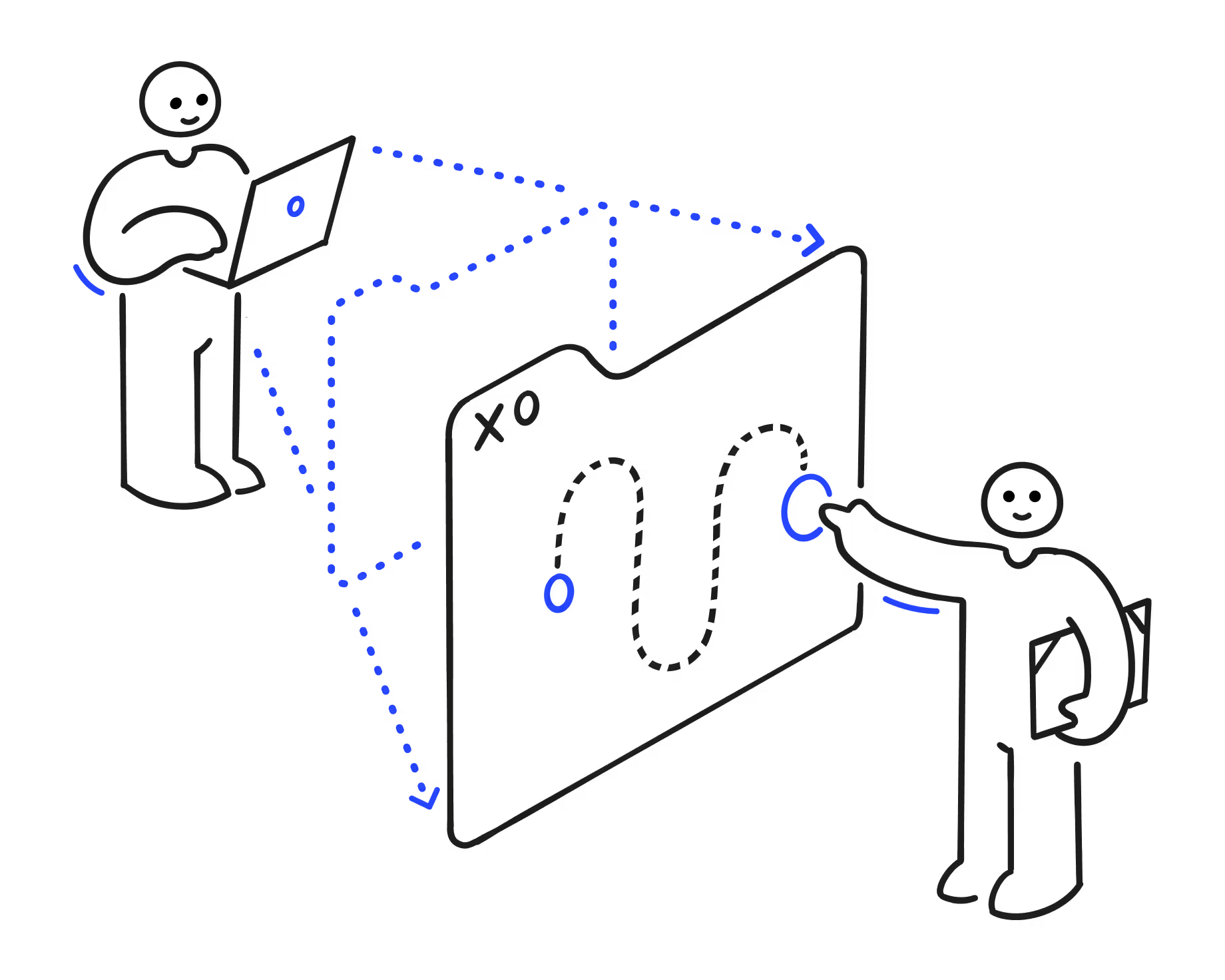How AI facilitates smarter workforce planning

Career development plan template

Businesses that fail to prepare are preparing to fail. But by projecting future personnel challenges and using workforce planning to ensure employees can combat them, tough times become opportunities for success.
Effective workforce planning allows organizations to predict upcoming challenges and put the right people in place to tackle them. Clear contingency plans and skilled workers prevent minor disruptions from becoming full-on derailments. Plus, AI systems can enhance this process, offering precise data-driven insights that open the door to smarter forecasting.
This article breaks down what workforce planning is, outlines best practices to follow, and demonstrates how AI can elevate the process.
What is workforce planning? Key concepts and benefits
Workforce planning is when businesses forecast future demands on employees' time and put structures in place to tackle them. It requires companies to track workloads and project how much work teams can take on.
It’s often confused with workforce management, which ensures day-to-day operations run smoothly. However, workforce planning is future-oriented, projecting any changes to current workflows and capacity.
Here are the main principles of workforce planning:
- Adapt to change: Workforce planning tracks market trends and anticipates changes in demand so companies can accommodate shifts in resource allocation.
- Address inefficiencies: Projecting where teams might struggle highlights ineffective areas within an organization.
- Maintain quality: Identifying potential problem areas means the right adjustments can be made to maintain performance and work quality.
- Improve retention: Planning for tough or busy times allows companies to safeguard employees from the negative impacts. This can help encourage them to stick around, even in difficult circumstances.
- Provide professional development: Offering learning and development (L&D) opportunities provides employees with the skills required to tackle future challenges.
- Optimize labor resources: Recognizing upcoming demands makes it easier to place the right people in positions to tackle them.
Benefits of workforce planning
Individuals, teams, and executives all benefit from workforce planning. Here are the main advantages that strong workforce planning offers.
Continue hitting targets
By outlining the resources, strategies, and processes required to tackle future challenges, companies can continue to meet their goals. Workforce planning projects any potential people demands and ensures workers have the resources to keep performing at their best. That benefits the bottom line, from one person’s productivity to the company’s targets.
Informed decision-making
Effective planning offers HR leaders insight into workforce trends and talent needs. Instead of relying on guesswork, this data ensures that HR teams allocate resources for recruiting or mentorship in the most effective way possible.
Maintained productivity and performance
By conducting workforce planning, businesses identify which employees can best tackle upcoming challenges. This can help lessen any blow to productivity and performance. Plus, it could provide insights into which employees exceed expectations and are candidates for promotions.
Strengthened talent management
Workforce planning helps determine which roles and skills the business requires ahead of time. Identifying any talent gaps means hiring new people who can meet demands head-on. And managers can plan what to delegate to existing employees based on strengths and development goals.
Optimized costs and resource allocation
Forecasting demands on people’s time means better work schedule planning. Tracking forecast accuracy then shows productivity patterns and work hour usage. Allocating resources through this type of data-driven planning reduces operational costs while maintaining efficiency.
Increased agility and adaptability
Predicting when to bring on additional talent allows businesses to accommodate sudden market changes. Proactively adapting to forecasted events allows companies to react to evolving circumstances without additional expense.
How to conduct a workforce plan
Here’s a five-step plan for crafting an impactful workforce plan.
Step 1: Establish organizational strategy and direction
The first step in identifying any potential demands on the workforce is laying out the company’s organizational strategy. Long-term strategy and vision provide direction that you can trace to specific personnel needs. Knowing the circumstances the business will encounter can help identify the challenges it might face.
Step 2: Analyze current workforce capabilities and forecast future needs
Conduct an extensive analysis of the current workforce, noting down roles, responsibilities, performance metrics, and turnover rates. Next, project how market trends or any planned organizational changes might impact the workforce. Pinpoint how many employees are needed in each department to cover both current and future demand.
Step 3: Conduct a skills gap analysis
Now that there’s a comprehensive breakdown of the current workforce and its projected future needs, conduct a skills gap analysis. Compare current skill sets with forecasted requirements. This reveals any understaffed departments and which L&D initiatives to focus on.
Step 4: Assess the supply of talent and develop L&D strategies
Beyond just hiring more workers to fill any departmental gaps, develop strategies to upskill current employees. Individuals may have the skills to carry out their roles right now, but not in more challenging circumstances.
Combining external hiring with internal upskilling can lead to a more rounded workforce while saving on recruitment costs.
Step 5: Develop a roadmap, execute, and iterate
After developing a strategy, it’s time to execute the workforce plan. Measure the efficacy of the strategy by monitoring against several key performance indicators (KPIs), such as productivity levels, engagement, turnover, and employee net promoter score.
Over time, refer to these KPIs and iterate on the workforce planning strategy to ensure continual improvement.
Best practices for implementing a workforce planning process
Here are a few examples of workforce planning best practices that can help streamline the process.
Put data first
Workforce planning is a data-driven process. Refer to predictive analytics and internal data as much as possible. These statistics provide transparency, remove guesswork, and improve workforce planning.
Involve company-wide stakeholders
Workforce planning is an organization-wide push that goes beyond just HR. Involve senior leadership from all teams to ensure alignment, address concerns about resourcing, and work collaboratively toward business goals.
Broaden your tech stack
Platforms like Workleap offer advanced analytics, AI-driven insights, and customizable dashboards. Add software like this to your tech stack to simplify your workforce planning and gain better visibility into your teams’ engagement levels and performance throughout the process.
Communicate change with employees
New ways of working may be intimidating to employees. Put them at ease by enacting a quality change management plan to help them adapt. Clearly communicate why changes are happening to keep everyone on the same page.
3 tools to support workforce planning
There are plenty of tools to support workforce planning efforts. Here are three categories of technology that can help streamline the process.
1. Workforce planning software
Workforce planning software includes platforms that consolidate and optimize employee data. This may include tools that allow companies to forecast different scenarios and simulate the impact on employee workloads, capacity, and experiences.
2. Talent management software
By facilitating feedback, talent management software keeps you aware of any role-specific concerns employees might have, helping you paint a fuller picture during the workforce planning process. Through custom surveys and anonymous feedback, Workleap Officevibe allows you to collect valuable insights into your team members and their roles. Workleap Performance takes this even further by offering AI-driven insights to track performance and improve employee management.
3. Talent assessment marketplace
Talent marketplace software connects employees with internal opportunities based on their skills, interests, and career goals. These platforms can reduce hiring costs by utilizing existing employees’ expertise and avoiding external hires.
How can AI improve workforce planning
AI’s advanced and real-time data processing capabilities can enhance productivity, improve employee engagement, and facilitate more precise predictive analytics.
Here are a few ways AI can make a difference in workforce planning:
- Automating time tracking and absenteeism management: AI automation can reduce the number of manual tasks HR teams must carry out. This includes tracking employee absenteeism trends and monitoring team capacity.
- Enhancing employee performance tracking: AI can carry out real-time performance tracking. Tools monitor whether employee output is as high as it could be.
- Improving predictive analytics: The enormous amount of data that AI tools can process leads to more precise predictions about potential disruptive events.
Rather than deploying AI wherever possible, it’s important to have a clear vision. Unless you plan to use AI for a specific purpose, it can be a hasty investment. Decide on which metrics AI would best help track and analyze, and build up usage gradually.
Better workforce alignment with Workleap’s performance management tools
Workforce planning allows businesses to deploy the right people in the right places to ensure operational efficiency. By mapping out future demand, you can meet organizational goals and supply your company with the required talent, no matter the circumstances.
Workleap AI accelerates the process of workforce planning, offering real-time insights into employee data. When combined with tools like Workleap Performance for customizable performance reviews and Workleap Officevibe for engagement tracking, businesses can make smarter workforce decisions.
See how you can launch your company toward better workforce management by requesting a demo today.
Discover Workleap Officevibe's benchmark report on 12 key employee engagement metrics


%20(1).avif)


.avif)
.avif)
.avif)




